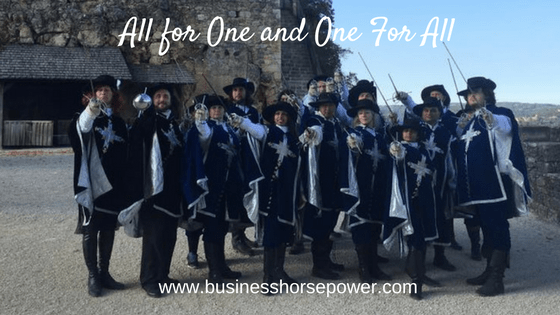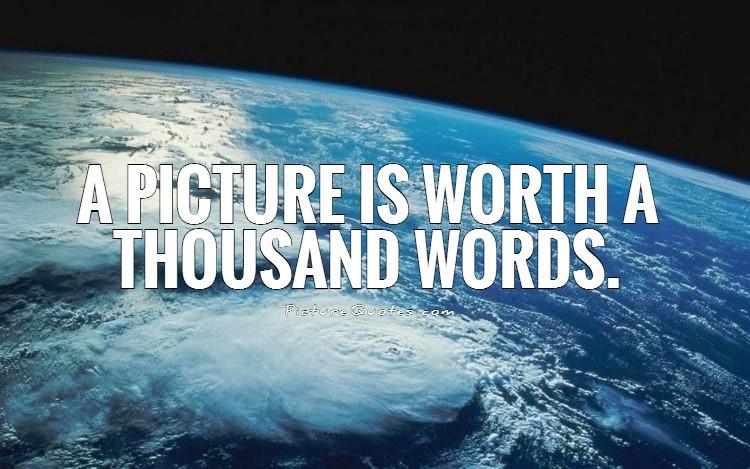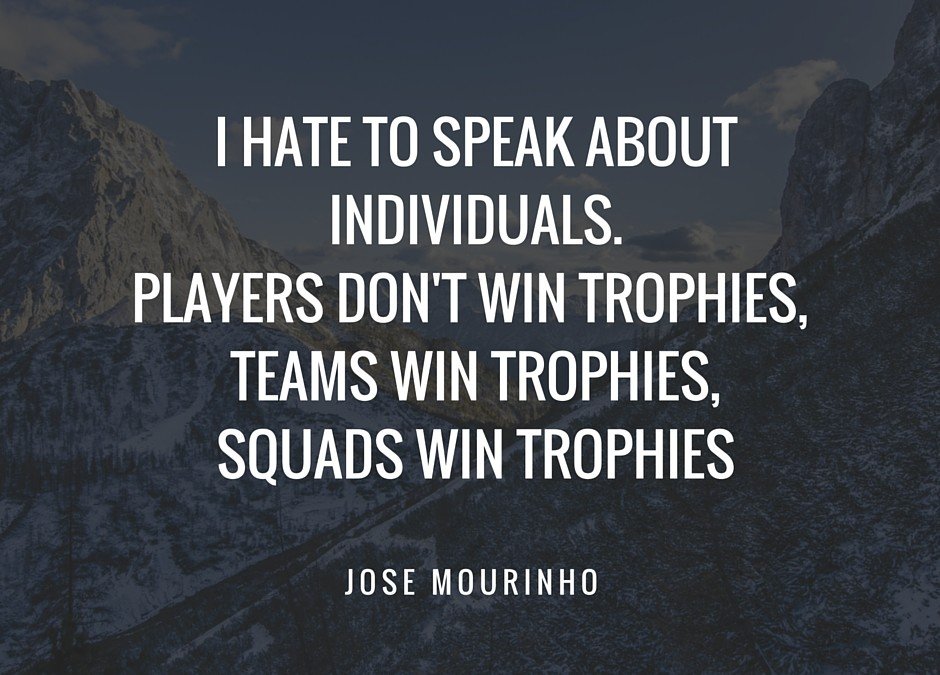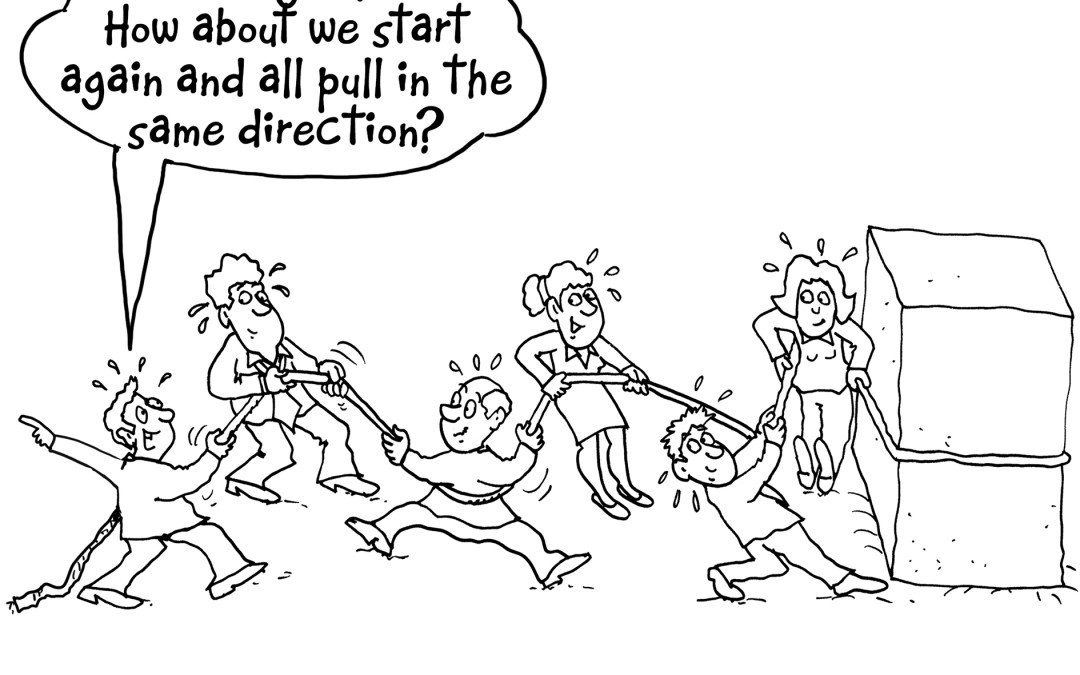
by Julia Felton | Oct 12, 2016
My motto for last week as I was transported back into time and rode through France as a Musketeer was “All for One and One For All”. Before I decided to attend this Musketeer Academy I have to confess to not really knowing about the stories of the three musketeers and the important role they had in serving the French King and protecting him. And I certainly never really gave any consideration to their motto “All for One and One For All”, and yet the more time I spent as a Musketeer, the more I experienced how this philosophy was critical for their success and how it’s essence is fundamental to business success too.
To me the phrase “All for One and One For All” embodies the real need that we have in business right now for collaboration and co-operation. No longer can an individual be successful by themselves, but rather success comes from being part of a team. It comes from the collective actions of everyone rather then the results of one individual.
I often talk about Shared Leadership and how in today’s fast paced environment there is simply too much going on for just one leader to pay attention too. This is why the leadership role needs sharing, and it is what the horses do so well. They act seamlessly together to collectively ensure the safety of the herd – and if any herd member is not playing their part, they are quickly reprimanded and if necessary expelled from the herd. The herd act as one and understand that value of “All for One and One For All”, after all their very life depends on it.
I experienced the importance if “All for One and One For All” whilst learning fencing too. As our troop of Musketeers stormed the castles it was imperative that we all worked together if we were to overcome our adversaries. After all in battle your odds of success are considerably stacked in your favour if you’re fighting two on one, rather than one on one!!. But this is only possible if you have a clear focus and everyone knows the direction and the goal you are aiming for.
So this weeks Wednesday Wisdom thought is how can you collaborate and connect with others, how can you share your dreams and vision and in the words of Jim Collins “get the right people on the bus” so that you have a team working alongside you that are all focused on the end goal, rather than their own personal agenda and ego and who live the adage “All for One and One For All”
As always I’d love you to share in the Facebook group about what you are doing to create your own team of Musketeers who embody the values of “All for One and One For All”

by Julia Felton | Sep 21, 2016
During the last few years I have never ceased to be amazed by the power of the collective to achieve amazing results. It is one of the reasons that I always encourage my clients to find a team of people to support them as they grow their business.
All too often when we start off in business we fail to engage the support of others as often we feel it is too expensive and the business can’t afford it. The real truth is that you can’t afford not to have a team around you. Each team member provides a different perspective and these different opinions can help elevate the business to a different level than the business owner can achieve by themselves.
Yesterday I spent a day with three colleagues preparing for an international event we are delivering for a global client in early October. We are achieving a first as we are delivering a UK version of the Teaching Horse programme simultaneously in Amsterdam and North Carolina, USA.
There are some unique features of the Teaching Horse methodology so we decided to to have a practice day to ensure that we were all on the same page. What was amazing was that each of us brought our unique interpretation to the approach, but by discussing and collectively practicing the exercises we were able to create a streamlined approach that flowed much better than each of us could achieve individually.
That is the power of the collective intelligence and why I am also an advocate of Mastermind groups and working in teams. You can read about the power of Mastermind groups here.
Interestingly, in nature lots of activities occur in collective groups. Just take a herd of horses. They live as a collective as this helps keep everyone safe. Geese fly in formation, lions hunt as a team. There are examples every where how of the power of collective achieves disproportional results. Definitely a case of 1+1=3.
So how can you leverage the power of the collective to achieve amazing results? I’d love to hear from you about what you going to do.

by Julia Felton | Jul 29, 2016
A few years ago the guru’s at Google set out to determine what makes a high performing team. Now we all know how great Google is at finding patterns in data series but the reality is that after years of research and analyzing 150 teams they came to the conclusion that simply there was no pattern. Initially they had believed that putting the best people on a project would get the best results but this simply was not true.
So what ensures that a team is high performing?
The Google executives frustrated with the lack of patterns in the data they collected, the researchers delved further into reviewing past academic studies on how teams work. In the literature, they discovered that psychological and sociological research kept using the term “group norms” when describing successful groups. Norms are the traditions, behavioral standards and unwritten rules that govern how we function when we gather. It was becoming clear that the most effective teams had ‘group norms’ that added to their success.
The challenge that the Google researchers now had was figuring out which ‘group norms’ were the most valuable. With further research, the group norm that emerged as one of the most powerful was ‘psychological safety’.
‘Psychological safety’ has been described by Harvard Business School professor Amy Edmondson as a ‘‘shared belief held by members of a team that the team is safe for interpersonal risk-taking.’’ “A sense of confidence that the team will not embarrass, reject or punish someone for speaking up,’’ Edmondson wrote in a study published in 1999
How to create Psychological Safety
Creating a psychologically safe environment for a team needs to be spearheaded by the leadership in the developing stages of a team. This is the reason that leaders play a more significant role in creating effective teams than the people who make up the team. I certainly know this to be true from my own experience. Some of the best teams I have been part of have been led by inspiring and compelling leaders. People who have been really inclusive and have led by example. People who have created an environment in which we have all felt valued, included and safe to share. A place where we can be authentic and be ourselves. A place were we don’t have to worry about putting on a our game face but rather can show up as our true self, devoid of any masks.
Leaders need to allow for the creation of an emotional safety net to develop within their teams. One way to create this environment is to carve out time for people to actually share their feelings and not just updates on the latest reports or budget numbers.
Leaders can take the time at weekly meetings to start by asking how people are feeling and why. The first few times these conversations happen, it will be beneficial if the leader shares first to set an example of the level and type of information to be shared. In one example from Google at an offsite retreat with a newer team, the leader started off the conversation telling his team that he had cancer and the effects it was having on his life. This opened the doors for in-depth sharing from the rest of the team.
As a leader showing up as authentic and vulnerable can really set the tone for the group and encourage others to open up and so have courageous conversations without fear of reprisals. (You can learn about the 6 C’s to Courageous Communication here). Being vulnerable goes a long way in developing strong trust bonds and trust is the basic building block of teams.

by Julia Felton | Jun 25, 2016
Having led and worked in teams for more than 30 years, I thought I’d share a few key ideas that I have learnt that will you get a team of people to work more cohesively and effectively together. It is particularly effective to do some of these with a new team or group that about to embark on a project together. It can really pay dividends in the smooth running of the project.
1. Enable Them To Build trust
In my book The Alchemy of Change I reveal how trust is the glue that holds a business together. It is that unseen factor in business that makes all the difference. In his book on the five dysfunctions of a team Patrick Lencioni explains i it is really important for a team to develop ‘vulnerability-based’ trust. This means that they need to share things and understand more about each other. Personally I love using Talent Dynamics which is an assessment tool which helps team members learn more about themselves and their other team members in a non-threatening way. And of course when you understand the drivers of your other team members communication can be enhanced. Also by every team member focusing on their strengths the group collective is enable to achieve greater productivity and profitability than the sum of the individuals. This is the power of collective teamwork.
Another way to help team members build trust is by allowing them to share stories with each other about when they were younger. Here is a format that I got from Larry Reynolds, which I have used many times to great effect.
- Think of a time when you faced some kind of challenge. It can be a challenge big or small, and it can be something that happened recently or many years ago. Challenges you faced as a child or young adult can make especially powerful stories. The only proviso is that things worked out alright in the end, and that you are happy to share this experience with others.
- How did you feel when you encountered this challenge? It’s probably something on the spectrum between concerned and terrified.
- What unexpected help came your way? Maybe you drew on some inner resources, or maybe someone else helped you.
- How did things work out in the end?
- What did you learn from this experience?
- What does that say about your values and beliefs as a person now
2. Help Them Get Comfortable With Disagreeing
It’s really important, if a team are to make great decisions that they are comfortable with a level of conflict and disagreement in the team. Give them some tasks to do that involve disagreement and negotiation. Set a task where a decision needs to make and carefully facilitate a discussion where when a person states a point of view or puts forward an idea, at least two people must say specifically what they like or agree with and then at least two people must point out potential issues, flaws or reasons that they disagree. When a team can get comfortable separating the ideas and concepts from the person, they will be able to make better decisions. Also if issues are discussed properly, teams are able to commit to decisions that they don’t necessarily fully agree with if they can understand the rationale behind the decision and they feel that they have been fully heard.
3. Help Them Get Comfortable Giving And Receiving Feedback
Giving and receiving feedback effectively will enable the team to grow and develop faster and will also enable them to hold each other accountable for behaviours and results. Enable them to practise giving real face-to-face feedback by doing an activity such as ‘warm seat’:
A ‘warm seat’ is a little bit like a hot seat but cooler! Group members prepare questions to ask the rest of the group about themselves. These questions can be positive e.g. what is great about working with me? Neutral e.g. what is it like working with me? Or negative e.g. in what ways do I sometimes annoy you? Group members take it in turns to sit in the warm seat for a pre-arranged amount of time e.g. five minutes and ask their questions. Group members answer the questions (which can be general or specific) as specifically as possible with examples. They can only answer questions posed and at any time the person is free to vacate the warm seat if they’ve had enough.
4. Set Up A Team Charter
Another practical thing that a team can do is to set up a team charter, which includes agreements about ways of working. Get clarity first on the team’s vision, purpose and values. Then get clear about people’s different roles within the team by defining individual responsibilities and goals through referencing their strengths using Talent Dynamics. They can then get into identifying appropriate behaviours for team members, communication and decision-making processes and agreements about the use of resources. Encourage the team to put forward ‘rules’ that they can all sign up to, for example, ‘we get back to e-mails from each other within 24 hours’ or ‘when we disagree, we express this calmly and openly’ etc. Once this charter is established, team members can be encouraged to hold each other accountable for both behaving in line with what has been agreed and for their responsibility areas. This should happen as part of every team meeting.
5. Practice Being A Real Team By Giving Them A Challenge To Complete
Overcoming obstacles to achieve a goal is something that we typically get all teams engage in during my leadership with horses workshop. In this exercise the team members set the goal they wish to achieve and then build obstacles that could represent things that could prevent them from meet the goal. They then get introduced to a new team member (a horse) and have to all work together to get over the obstacles and achieve the goals. The team get all kinds of insights into how to communicate effectively, the different positions of leadership and how to co-operate and collaborate together to achieve success. The celebrations that occur when the team is successful are incredible and every team has always gone back to the workplace with more confidence and certainty about their capabilities.
Since the team has had an embodied experience of how to work successfully together this physical or ‘muscle’ memory stays with them and also make them want to achieve that feeling of working in harmony and being jointly accountable again!. Once people feel what it’s like to truly work as a team and achieve positive results, they usually want to do it again!
To learn about how to develop your high performance team please connect with me for a complimentary conversation and lets explore what’s possible.

by Julia Felton | Feb 11, 2016
The adage goes that “a picture is worth a thousand words”, so therefore I’m curious to know what you think about this picture. What message do you think I was being sent when it arrived in my inbox? And how do you think I reacted?

We often totally under-estimate the power of non-verbal communication in our society and yet non-verbal communication is an essential component of everyday life. We can convey a simple or complex message very succinctly with how we show up.
If we are feeling bored and unenthusiastic at work our body posture will probably express this with folded arms, rounded shoulders and generally looking glum and sad. Contrast this with a team member who is happy and in flow enjoying their job. They probably have a spring in their step, are literally walking on air and have a happy countenance.
How we BE at work and in life shapes how people interact with us and therefore the experiences we have. Sure words are important, but only up to a point as research shows that our body language and tonality have a much greater impact on the impression we make than anything else.
So how do you think I responded when I received this. Well of course I laughed and immediately saw the funny side of how my actions were stopping one of my colleagues getting on with her work. What might have become a heated conversation – her chasing me for something I hadn’t completed – got deflected with with one simple image.
So how can you use non-verbal communication to convey your message in a fun and innovative way?. I’d love to hear what you are doing.
And of course if you want to learn non-verbal communication from horses, who are masters at this, then look out for my Art of Communication workshop that up soon. You can find all the details here.
Have an inspired rest of the week.

by Julia Felton | Jan 9, 2016
Success is a team sport and it is imperative that you have the right team members alongside you to create a winning team. Now I know when you are starting out in business having a team might seem like a luxury, but trust me it is the best investment you can make.
Having a team helps you feel supported and no longer alone. The curse of the business owner is feeling like they have to do it all themselves, whilst the opposite is in fact true. Surround yourself with team members who excel at the activities you don’t. It will make your life so much easier and allow you to spend time doing the things that you love and that add real value to the business.
And if you’ve ever like to add me to your team then let me know and we can schedule a complimentary strategy session to see if we would be a good fit for each other.
Just like any successful sports team, your team members must gel together if you are to really leverage the full benefits of teamwork.

by Julia Felton | Nov 27, 2015
Just because you have the title of leader doesn’t make you are a leader. And just because you don’t have the title of leader doesn’t mean you aren’t a leader. To my mind everyone in the organisation is a leader which is why in my new book The Alchemy Of Change: The Key To the Future Lies In The Past I explore the concept of Shared Leadership.
So what is Shared Leadership?
Shared Leadership is the concept that, given the rapidity of change, there is no way one person can know about everything in the business. For a business to be successful, leadership and decision making needs to be shared.
The old paradigm of command and control leadership simply won’t serve us in this The Big data era, where collaboration is a necessity. There is simply too much going on for one leader to be able to manage it all. This in itself creates blind spots for businesses, which is why a more flatter, more collaborative style of leadership, which is more responsive is required.
When Shared Leadership is adopted within the organisation then everyone looks out for the needs of the businesses, not in a self-serving ego way, but from a place of contribution to the community. Everyone is focused on the goal and works as a team to achieve this. It always surprises me that business has not taken a leaf from the world of sport. In a sports team there is no place for individual performance. Success only comes from the collective performance of the team.
The famous basketball player Michael Jordan knew this when he said: “Talent wins games but teamwork and intelligence wins championships”. Michael understood the power of collaboration and how only by all team members working together could the team win the game.
Interestingly, herds of wild horses also understand the power of Shared Leadership. The herd is structured with two leaders – the lead mare and the stallion – and they work in collaboration to keep the herd safe. They seek out food, water and shelter for the herd but the herd members do not solely rely on the leaders to keep them safe. Every herd member has a responsibility to maintain the safety of the herd and so contribute to its survival.
The herd has a shared purpose and focus, which quite simply is to stay alive. As a prey animal the horses main challenge is how to avoid being someone else’s dinner! It is this shared purpose and vision which enables the herd to become self regulating. There is no space in the herd for self-serving members and in fact they are driven out of the herd. This is the worst punishment ever because being evicted from the herd means that you are all alone, and this is not a safe place to be because its challenging to protect yourself when you are isolated from others.
So when is business going to wake up to the need for Shared Leadership? I wonder how much more productive and profitable an organisation could be if everyone was working from the same page towards the same goals and where the result of the team was more important than that of the individual.
The 2010 Burston-Marsteller?IMD Corporate Purpose Study revealed that organisations that focused on having a strong well communicated corporate purpose that everyone in the business got behind delivered a 17% improvement in financial performance compared to those organisations that didn’t. Wow, what a load of resources are being wasted in business simply because of the self serving stance that many people are taking.
Imagine the possibilities if everyone in business worked more effectively together as a high performing team. I wonder what we all could achieve.
If you’d like to learn more about the principles of creating a high performance business with Shared Leadership then please connect with me for a complimentary consultation.

by Julia Felton | Oct 1, 2015
When you type the phrase ‘inspiring leaders’ into Google, the results are most likely what you’d expect — images of Steve Jobs, Martin Luther King, Mahatma Gandhi and Nelson Mandela. But have you ever stopped to consider why these usual suspects show up time and time again in conversations about inspiring leadership, and what they might have in common, in terms of the way they think, act and communicate?
One of the most popular TED talks of all time, given by leadership expert Simon Sinek, considers this very question. With almost 20 million views, there are clearly many people who want to understand what it takes to lead in a way that inspires others, and why it is that some organisations and some leaders are able to inspire where others aren’t?
In his talk, Sinek claims to have discovered a pattern between these leaders, which he has codified into an idea called the ‘golden circle’.
“Every single person, every single organisation on the planet knows what they do, 100%. Some know how they do it, whether you call it your differentiated value proposition or your proprietary process or your USP. But very, very few people or organisations know why they do what they do…By “why,” I mean: What’s your purpose? What’s your cause? What’s your belief? Why does your organisation exist? Why do you get out of bed in the morning? And why should anyone care?”
Core to Sinek’s ‘golden circle’ principle is the idea that “people don’t buy what you do; they buy why you do it.”
Apple
Citing Apple as a shining example, Sinek attributes the brand’s success to its ability to get people to believe in what it does by communicating why they do things the way they do. So rather than saying “we make great computers — want to buy one?”, Apple has always placed emphasis on communicating from the inside out, clarifying why it builds the products it does.
According to Sinek, Apple says: “Everything we do, we believe in challenging the status quo. We believe in thinking differently. The way we challenge the status quo is by making our products beautifully designed, simple to use and user friendly. We just happen to make great computers. Want to buy one?”
The science
Sinek bases his theory upon scientific fact, and specifically, the biological make-up of the brain, which he says corresponds directly to his ‘golden circle’ rule.
A cross-section of the brain has three major components. The neocortex (on the outside) is responsible for all of our rational and analytical thought and language. Our limbic brains (the middle two sections) are responsible for all of our feelings, like trust and loyalty. They are also responsible for all human behaviour, all decision-making, and have no capacity for language.
So, according to Sinek, “when we can communicate from the inside out, we’re talking directly to the part of the brain that controls behaviour, and then we allow people to rationalise it with the tangible things we say and do. This is where gut decisions come from.”
For a business having a clear purpose, a clear Why, is essential to give the business direction. The business Why acts like a true north compass steering the business towards success, Without knowing where you are going the business can end up stalling and at best going round in a circle. Being busy but achieving little.
A clear business Why is also of paramount importance as it helps engage the mind and soul of team members who want to innately contribute to a bigger purpose. When everyone is on the same page then as the organisation is able to start unlocking some of its hidden potential. Why? because team members give more of themselves when they acknowledge they are committed to a vision bigger than themselves. In the words of Sinek, “Whether they’re individuals or organisations, we follow those who lead, not because we have to, but because we want to. We follow those who lead, not for them, but for ourselves.”
So if you haven’t already, ask yourself why you do what you do every day. Once you can answer that with conviction, you’ll be more likely to hire team members who share your beliefs and win the trust and loyalty of those whom you lead, whilst sprinkling a bit of inspiration along the way.
Creating a solid Business Promise (Why) is a key facet of one of the three cornerstones of creating a Joined Up Business and that is explained in my book the Alchemy Of Change: Ancient Wisdom Re-invented to Unleash the Potential Of Leaders and Team. You can get a copy here.

by Julia Felton | Sep 22, 2015
Your flow comes from following your natural path. Your team momentum comes from each team member following their natural path. Each frequency and each profile has a different role within the team where they can be most effective. Often the best team selection is not the person who can be most effective, but the person who enables the existing team to become more effective.
Here are the 8 profiles, and the role within the team that allows them to be in their greatest flow:
Creator: The initiator
Creators are the best initiators, and although they can be quick to create chaos, they can also be surprisingly innovative at finding ways out of chaos. Always put them in charge of new projects, but move them on to the next creation once their job is done.
Star: The promoter
Stars are the best promoters, but need to lead from the front. Give them the chance to shine, and give them the space to deliver results without tying them down. Give them the systems and support to enable them to focus on building new business.
Supporter: The leader
Supporters are the best leaders, but don’t expect them to come up with the plan. Build a plan and set the goals with a Supporter, and then let them lead the team towards the plan. Let them set their own management style, and their own agenda.
Deal Maker: The peace maker
Deal Makers are the best peacemakers, and will leave everyone feeling good. Don’t expect them to go out cold calling, as they thrive on building the relationships they have. Work with Deal Makers to nurture the customer and relationships you have.
Trader: The negotiator
Traders are your best negotiators. They will always get you the best price, in both what you buy and what you sell. They want to be given the parameters in which to work. Traders will have their ear to the ground in your market and your team.
Accumulator: The ambassador
Accumulators are your best ambassadors. They are reliable, get things done on time, and are not prone to making rash decisions. Accumulators make the best project managers, when a specific task needs to be delivered reliably.
Lord: The analyst
Lords are your best analysts. Give them the space to study the detail, and to deliver the data. Don’t ask them to go out and network, as they are strongest when focused behind the scenes.
Mechanic: The completer
Mechanics are your best completers. They will wrap up the process and find smart ways to do it better next time. Don’t ask a mechanic to start from scratch, but do give them an existing process or product to improve on.

by Julia Felton | Mar 24, 2015
Trust “is both a mindset and a toolbox for 21st-century leadership”. Robert A. McDonald, Chairman, President and CEO, The Procter & Gamble Company
In today’s networked world, Trust has become the new currency – the critical competency for individuals, teams, organisations and even countries. Trust impacts every situation and relationship whether personal or professional.
Trust acts like a lubricant. It reduces friction and creates conditions for evolving high performance teams. How well the team works together is the true indicator of future success or the ability to manage through the struggle of relentless change. Without trust there would be no harmony in the team and business and dis-ease would prevail.
When we work in a high trust team things get done quicker and more easily. There is less conflict, less back-stabbing, less politics and more time spent on value added activities like innovative and customer service.
However, trust within teams does not happen overnight. As Joachim Low, the winning German Football Team World Cup coach noted “We’ve been together now for 55 days. We started this project 10 years ago, so this is the result of many years’ work, beginning with Jurgen Klinsmann. We’ve continued that work and our strength has been our constant progress. We’d not made this ultimate step before, but champions do what they will do. We believed we’d win it. We’re looking back over ten years of preparation and hard work. This team has developed a spirit which is unbelievable. We’re proud to be the first European team to win a title in Latin America, in Rio, in Brazil, in a footballing country par excellence… and this makes us proud.”
So what are the four key actions that team members must cultivate if they are to build and maintain trust with their fellow team members:
Commitment
Commitment is an important part of building trust. Every team member must acknowledge they play an important role in creating the success of the team and helping it achieve its goals. When one team member fails to deliver it has a knock on effect on everyone else in the team. This is why no matter if personal or professional obstacles present them team members must seek ways to keep their commitment to the team. Just as they need to rely on others, others must be able to rely on them.
Competence
Team members must trust that their teammates are competent and can successfully complete the tasks relevant to the team’s success. For example, each team member should be able to focus on an assigned task without worrying about teammates following through with their assigned tasks. Individual team members must realize when they need help and ask for it, instead of concealing weaknesses from the group. When team members show vulnerability to their teammates and the teammates respond in an efficient and helpful manner, trust will grow between them.
Communication
Consistent and meaningful communication is necessary for building a trusting relationship within a team. For instance, if a team member finishes a task early, they should communicate to their teammates that they are finished and ask if they can help another team member with their part of the work. If one team member discovers vital information that is relevant to the team’s success, such as a deadline change or a lack of resources, they should communicate it to the other members as soon as possible.
Collaboration
True collaboration won’t happen without a sense of trust between team members. When team members collaborate, they share creative ideas without fear that another team member will take credit for their ideas. Through collaboration innovative ideas are born. It is definitely a case of 1+1=3. When team members trust each other they are more likely to show their vulnerability, which in turn will build more trust within the team.
In summary trust anchors every successful team. When team members demonstrate commitment, competency, communication and collaboration then others will trust them and superior performance will result both in terms of productivity and profitability. However, when a team is forming who do you trust? In the words of Ernest Hemingway “The best way to find out if you can trust somebody is to trust them.”. Building trust is a two way street as you need to give trust in order to get it.















